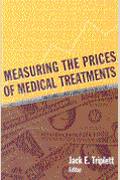Studies in this week’s Hutchins Roundup find that the EITC increases later-in-life earnings and work hours for single mothers, people are much more likely to die when they turn 62 years old, and more.
Want to receive the Hutchins Roundup as an email? Sign up here to get it in your inbox every Thursday.
The Earned Income Tax Credit increases later-in-life earnings and work hours for single mothers
Existing literature shows that the Earned Income Tax Credit (EITC) reduces poverty and increases employment among the low-wage workers it targets. David Neumark and Peter Shirley of the University of California, Irvine, hypothesize that the EITC could also have longer-run benefits because those who work more may accumulate more skills and enjoy persistent earnings increases. Using information on various state and federal EITC policies with longitudinal data on women’s earnings, marital status, and children, the authors estimate the impact of the EITC benefits received by women when they were between ages 22 to 39 on labor market outcomes at age 40. They find that, for single mothers, more generous EITC policies increase later-in-life work hours and earnings, implying that pro-work incentives can increase economic self-sufficiency.
People are much more likely to die when they turn 62 years old, probably from retiring
Most Americans become eligible for Social Security benefits when they turn 62 years old. Comparing death rates of those who have just turned 62 with those who are almost 62, Maria Fitzpatrick of Cornell and Timothy Moore of the University of Melbourne find that mortality increases by 1.5 percent in the month people turn 62, and the effect is greater among men. This jump in mortality at age 62 was not observed prior to 1962, the year that the Social Security eligibility age was lowered to 62. The authors find that the demographic subgroups with the largest increases in mortality at age 62 are those most likely to retire then, including unmarried males and males with little education. Further, the primary drivers of the increased mortality at 62— more deaths from traffic accidents and lung-related conditions—are causes of death that have previously been linked to losing a job.
Quantitative easing is effective during periods of crisis, but less so in normal times
Yuriy Gorodnichenko and Walker Ray of the University of California, Berkeley, seek to explain how the Federal Reserve’s quantitative easing (QE) reduced short- and long-term interest rates. Using high-frequency data from futures trading around U.S. Treasury debt auctions, they identify unexpected shocks to the demand for Treasuries to estimate the likely effects of QE on bond market yields. They conclude that QE can move interest rates for debt at specific maturities because investors prefer to hold some maturities over others, but this mechanism only works when financial markets are disrupted and investors don’t arbitrage differences in the returns across maturities. The authors find that other potential QE channels, such as signaling future monetary-policy moves or influencing inflation expectations, appear less important. QE, the authors say, is an effective way to lower long-term rates in periods of crisis, but less so in normal times.
Chart of the week: More people who’ve been out of the labor market are finding work

Quote of the week:
“The labor market has tightened since we raised rates in June, but inflation is not rising. It doesn’t appear that we are sustainably moving closer to our inflation target. Inflation expectations are low and may have already fallen. Monetary policy is currently only somewhat accommodative. There don’t appear to be urgent financial stability risks at the moment. The global environment seems to have a fairly typical level of risk. One new development is the flattening yield curve, which is also urging caution. From a risk management perspective, we have stronger tools to deal with high inflation than low inflation,” says Minneapolis Fed President Neel Kashkari.
“Looking at all of these factors together led me to vote against a rate increase….[M]onetary policy is entering a delicate phase. We all want the economic expansion to continue. However, continuing to raise rates in the absence of increasing inflation could needlessly hold down wage growth while potentially increasing the chance of a recession.”
The Brookings Institution is committed to quality, independence, and impact.
We are supported by a diverse array of funders. In line with our values and policies, each Brookings publication represents the sole views of its author(s).









Commentary
Hutchins Roundup: Earned Income Tax Credit, retirement and death, and more
December 21, 2017